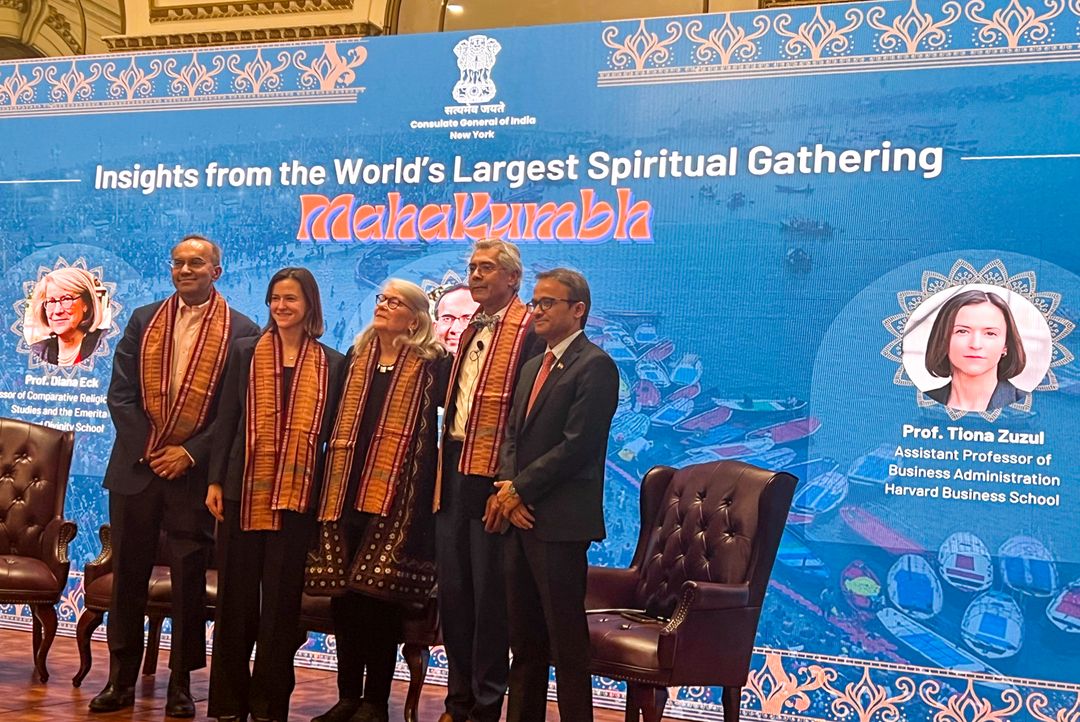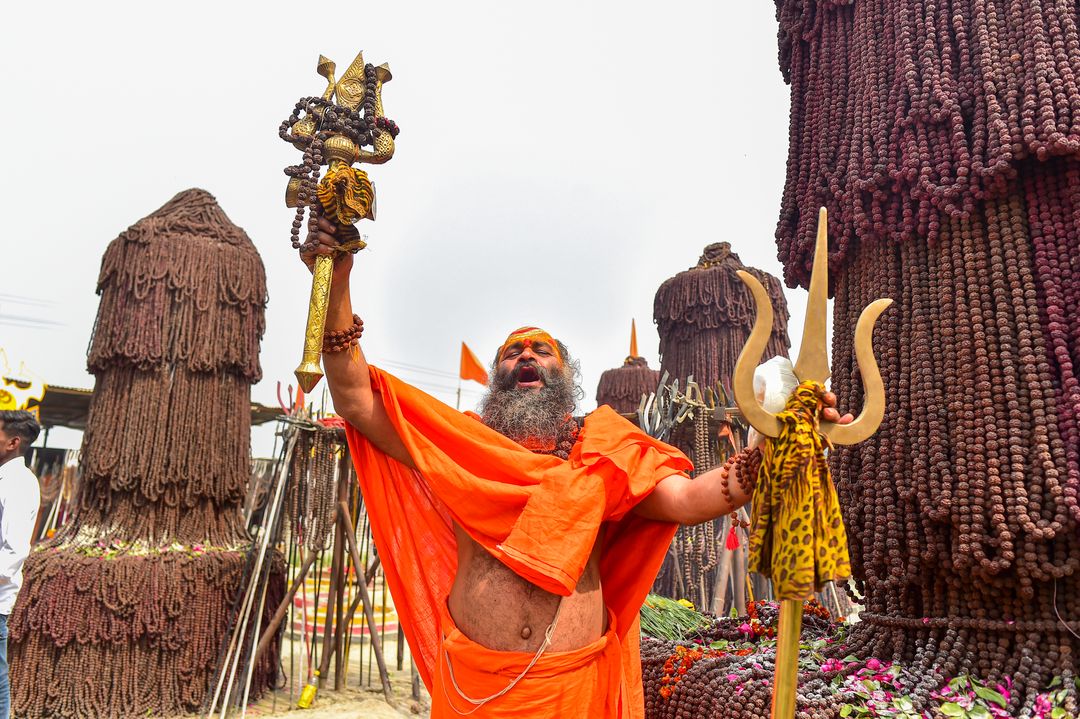
New York, Feb 26: In a thought-provoking discussion hosted by the Consulate General of India in New York, esteemed professors from Harvard University shed light on the unique blend of tradition and technology at the Maha Kumbh Mela. As the world’s largest religious gathering approaches its conclusion on Wednesday, the event explored the economic, spiritual, and infrastructural dimensions of this grand congregation.
The discussion, titled ‘Insights from the World’s Largest Spiritual Gathering - Maha Kumbh’, featured Tarun Khanna, Jorge Paulo Lemann Professor at Harvard Business School, Diana Eck, Professor of Comparative Religion and Indian Studies at the Harvard Divinity School, and Tiona Zuzul, Assistant Professor of Business Administration at Harvard Business School. The panel shared insights from their on-ground research at the 2013 Kumbh Mela and analyzed the evolving dynamics of the 2025 edition.
Tradition Meets Technology: A Model for Development
Addressing the gathering, Professor Tarun Khanna emphasized the seamless integration of tradition and modernity at the Kumbh Mela, highlighting how technology is gradually being absorbed into religious practices. "Society develops by retaining core traditions while layering technology on top," Khanna remarked.He praised this year’s Maha Kumbh for its focus on hygiene, branding it as ‘Swachh Kumbh’ due to its remarkable cleanliness. He also lauded the digital transformation of the “lost and found” services, describing it as a striking example of how technology enhances traditional pilgrimage experiences.
Engineering Marvel: Building a Temporary Mega City
Professor Diana Eck marveled at the logistical feat of constructing a massive temporary city in record time. “More than the pilgrimage itself, what astonished us was the rapid construction of an entire urban ecosystem—from electricity substations to health services and small businesses,” she said.Eck emphasized that the temporary structures at Kumbh, built using just four to five materials, exemplify scalable and efficient construction methods. She suggested that global regions, especially those dealing with refugee crises, could learn valuable lessons from Kumbh’s rapid infrastructure development.
Commerce and Spirituality: The Evolving Intersection
Professor Tiona Zuzul, who first visited the Kumbh Mela in 2013 as part of Eck’s research team, focused on the economic opportunities and logistical challenges associated with the festival. She expressed her curiosity about how commerce and spirituality will continue to evolve at future Kumbh gatherings.“It’s crucial for the government and businesses—both local and large—to strategize about the kind of Kumbh they want to create. What commercial opportunities should be offered while preserving the spiritual essence of the event?” Zuzul questioned.
She also highlighted advancements in crowd management, including the use of AI-powered cameras for monitoring gatherings. However, she noted that while infrastructure can be built swiftly, changing human behavior within such a vast congregation remains a long-term challenge.
600 Million Devotees Participate in Maha Kumbh 2025
The Maha Kumbh Mela, held at Prayagraj’s Triveni Sangam—the sacred confluence of the Ganges, Yamuna, and mythical Sarasvati—began on January 13, 2025, and will conclude on Mahashivratri. According to the Uttar Pradesh government, an unprecedented 600 million devotees have taken a holy dip in the Triveni Sangam so far.Summing up the spiritual significance of the event, Eck stated, “Ultimately, it is the river itself that draws people. The river is the cathedral, the temple, the destination.”
With each Kumbh Mela pushing the boundaries of organization, infrastructure, and spirituality, the insights shared by these scholars reinforce the event’s global relevance as a model for urban planning, technological integration, and religious coexistence.
Last updated by a enewsx:


